
This study reports the unexpected discovery of Brachyopa panzeri Goffe, 1945 (Diptera, Syrphidae) in Geneva’s urban landscape. In a significant finding, Brachyopa panzeri Goffe was observed on a recently cut trunk of Acer campestris, oozing sap, located within a central park in Geneva, notably adjacent to the main entrance of the Natural History Museum Geneva. This observation constitutes the first recorded instance of this seldom encountered species in the canton of Geneva. The paper provides an in-depth analysis of various behavioral characteristics of Brachyopa panzeri Goffe, contributing to the broader understanding of its ecological interactions and habitat preferences. This discovery not only enriches our knowledge of urban biodiversity but also highlights the significance of urban green spaces in conserving insect diversity.
Copyright © 2023 Genevieve Jannah. This is an open access article distributed under the Creative Commons Attribution License, which permits unrestricted use, distribution, and reproduction in any medium, provided the original work is properly cited.
However, the hoverfly family (Syrphidae) stands out as an exception to this generalization. These flies, often adorned with vibrant colors, can mimic bees, bumblebees, and wasps. Moreover, they are valued for their larvae, which feed on aphids. Despite some negative perceptions associated with species developing in onion bulbs and other Liliaceae, hoverflies have garnered attention from scientists and are considered one of the most well-known insect families in Europe. Switzerland alone hosts 475 known species [3, 4], and recent discoveries, including at least three new species [5], indicate that the family still holds undiscovered secrets.
Among the myriad of Syrphidae species in Switzerland, some are exceptionally rare, including Brachyopa panzeri [1] (Figures 1-3). In an unexpected turn of events on May 11, 2009, Bernard Landry, a scientific collaborator at the Natural History Museum, observed a significant number of dipterans near the museum’s main entrance on a maple stump oozing sap. This led to the observation and capture of dipterans, among which a sizable Brachyopa species caught attention. The identification revealed it to be a rarely observed species absent from most entomological collections. This noteworthy and unforeseen discovery marks the first documented occurrence of B. panzeri in the canton of Geneva. Given its significance, we deemed it essential to share details of this unexpected finding.
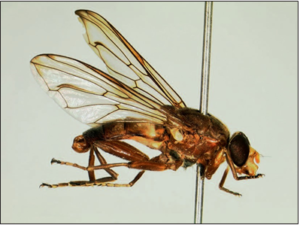 Figure 1: Brachyopa panzeri Goffe. Male, lateral view (GE: Geneva, Natural History Museum, 11.V.2009). (Photo: C. Reuteler, Natural History Museum Geneva).
Figure 1: Brachyopa panzeri Goffe. Male, lateral view (GE: Geneva, Natural History Museum, 11.V.2009). (Photo: C. Reuteler, Natural History Museum Geneva).
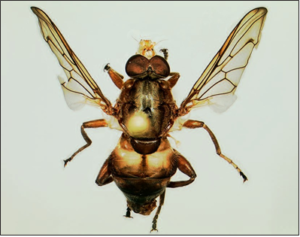 Figure 2: Brachyopa panzeri Goffee. Male, dorsal view (GE: Geneva, Natural History Museum, 11.V.2009). (Photo: C. Reuteler, Natural History Museum Geneva.
Figure 2: Brachyopa panzeri Goffee. Male, dorsal view (GE: Geneva, Natural History Museum, 11.V.2009). (Photo: C. Reuteler, Natural History Museum Geneva.
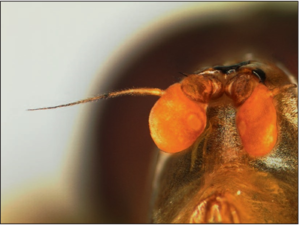 Figure 3: Brachyopa panzeri Goffee. Male, antennae (GE: Geneva, Natural History Museum, 11.V.2009). (Photo: C. Reuteler, Natural History Museum Geneva).
Figure 3: Brachyopa panzeri Goffee. Male, antennae (GE: Geneva, Natural History Museum, 11.V.2009). (Photo: C. Reuteler, Natural History Museum Geneva).
The history of Brachyopa panzeri [1], traces back to its initial description by Panzer in 1798 under the name Musca conica Panzer. However, due to its atypical appearance for a Syrphidae, the species remained enigmatic for an extended period. It often became entangled with species from diverse families, including Heleomyzidae (Suillia spp.), Sciomyzidae (Tetanocera spp.), Scathophagidae (Micropselapha sp., Scathophaga spp.), and even Muscidae (Phaonia spp., Thricops spp.). Compounding the challenge, the original description was quite brief, hindering clear differentiation from other Brachyopa species. Furthermore, the loss of Panzer’s types added to the confusion in the literature.
Distinguishing species within the genus Brachyopa poses a considerable challenge due to their morphological resemblance. Early records by [6, 7] in various locations mentioned B. conica in Switzerland, but these identifications are viewed with caution, possibly referring to other species. The first reliable citation was by [8], designating it as a rare species in the Jura and Plateau regions (5-9 localities in Switzerland). Subsequently, [9] included it in the list of Syrphidae in Zurich.
Species within the genus are morphologically similar, often requiring microscopic examination, especially of the male genital tract, for accurate identification. [10] provided the first reliable key covering the nine Swiss species, though four species described later from Central Europe were missing, necessitating integration based on their original descriptions.
[11] clarified the taxonomy, revealing that some species had been misidentified in the past. It emphasized the unreliability of older publications and established a more accurate framework for identification. B. panzeri is now documented in several European countries, including Germany, Austria, Belgium, Denmark, France, Hungary, Luxembourg, Netherlands, Poland, Czech Republic, Romania, Russia, Slovakia, Sweden, and Switzerland.
B. panzeri shares specific characteristics with B. dorsata Zetterstedt, notably the presence of more or less bare antennal chaeta (arista) and a mesonotum that is brown or slightly blackened. Differentiation relies on the structure of the male genital tract. Additionally, B. panzeri’s wings often exhibit diffuse browning at the edge and on the “vena spuria” (a rib in the middle of the wing fading in the middle of cell R5), distinguishing it from B. dorsata, which has entirely transparent wings. Despite recent descriptions lacking this detail, historical drawings accompanying Panzer’s description in 1798 clearly depict the partially dark wings of B. panzeri.
In a crucial revision, Goffe (1945) recognized that the name Musca conica was a homonym of Musca conica Gmelin, 1790, rendering it invalid. To resolve this, he proposed the valid name Brachyopa panzeri [1]. Approximately 30 years later, [11] spearheaded the first comprehensive revision of the Brachyopa genus, listing 12 species in the Palearctic region. This publication catalyzed a significant advancement in our understanding, leading to the description of eight new species, primarily from the Mediterranean region but also from central Europe. Currently, Europe boasts 15 recognized species, with nine documented in Switzerland.
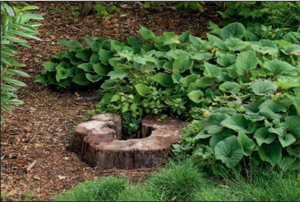 Figure 4: Habitat ofBrachyopa panzeri GOffe. Tree stump in front of the Natural History Museum. (Photo: Ph. Wagner, Natural History Museum Geneva)
Figure 4: Habitat ofBrachyopa panzeri GOffe. Tree stump in front of the Natural History Museum. (Photo: Ph. Wagner, Natural History Museum Geneva)
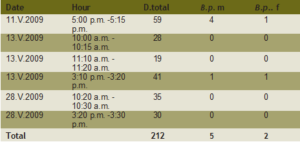 Figure 5: Capture of dipterans on the stump. Abbreviations: D. total = Diptera total;B.p.=Brachyopa panzeri; m = males; f = females.
Figure 5: Capture of dipterans on the stump. Abbreviations: D. total = Diptera total;B.p.=Brachyopa panzeri; m = males; f = females.
Contrary to assumptions by [4], it was not possible to substantiate the hypothesis that adults predominantly inhabit tree canopies. Existing literature. frequently mentions adult observations around reproduction sites, notably near sap-exuding stumps. However, their atypical appearance within the family, relatively dark coloration, difficulty in finding suitable micro habitats for development, subtle behavior, and limited activity period in the year could contribute to their rarity in collections.
Nemotelus nigrinus Fallen. 1 female, 28.V.2009. Typically caught on flowers or in marshes, the larvae’s biology remains unknown. The observation on the stump suggests a potential development site, distinct from other Nemotelus species with larvae in aquatic environments, sometimes even in saltwater. – New species for the canton of Geneva.